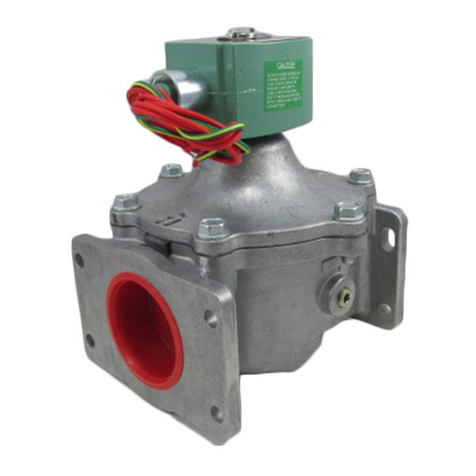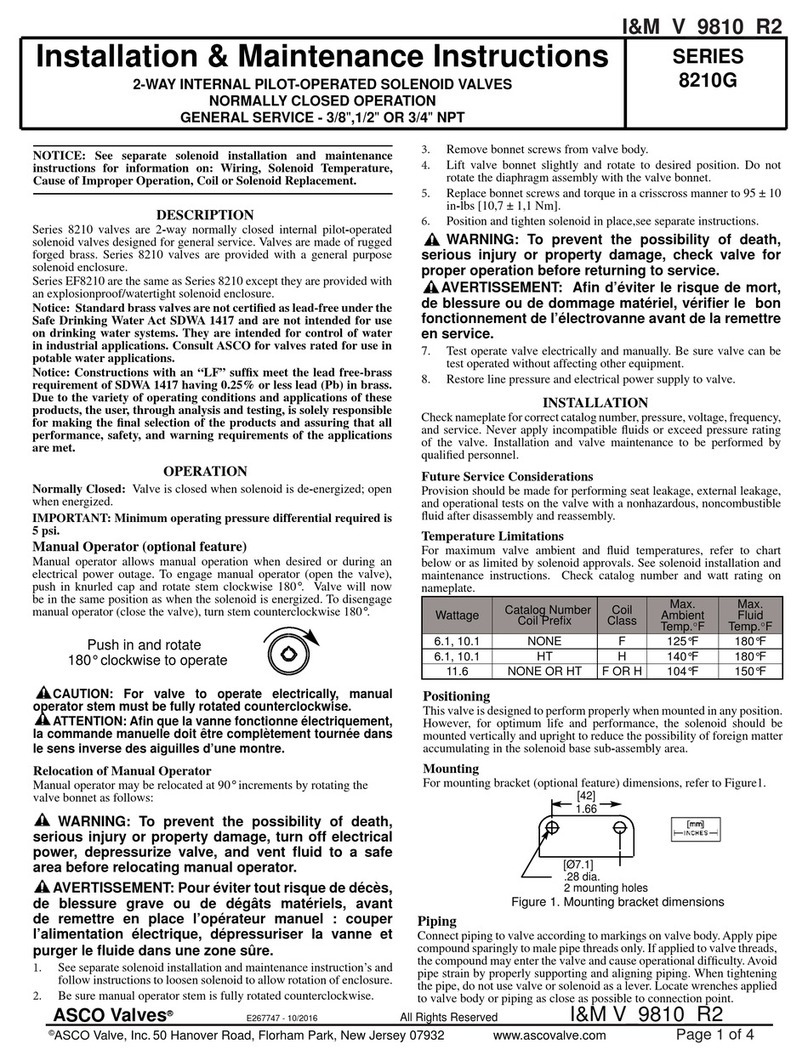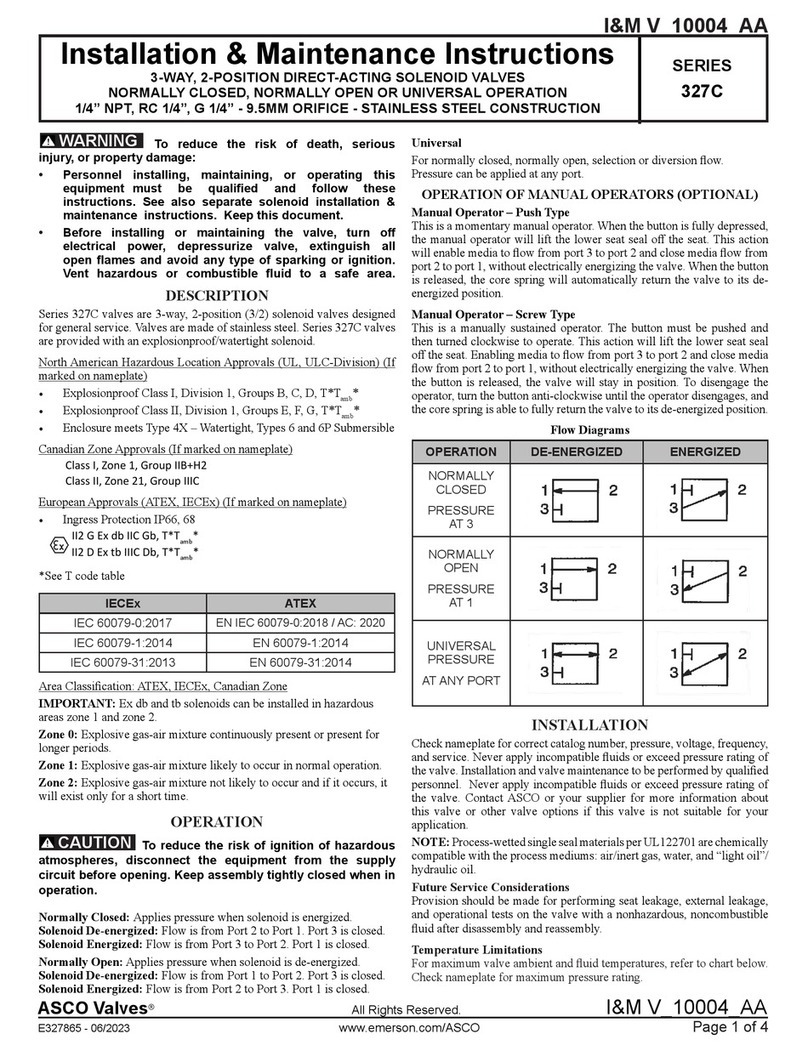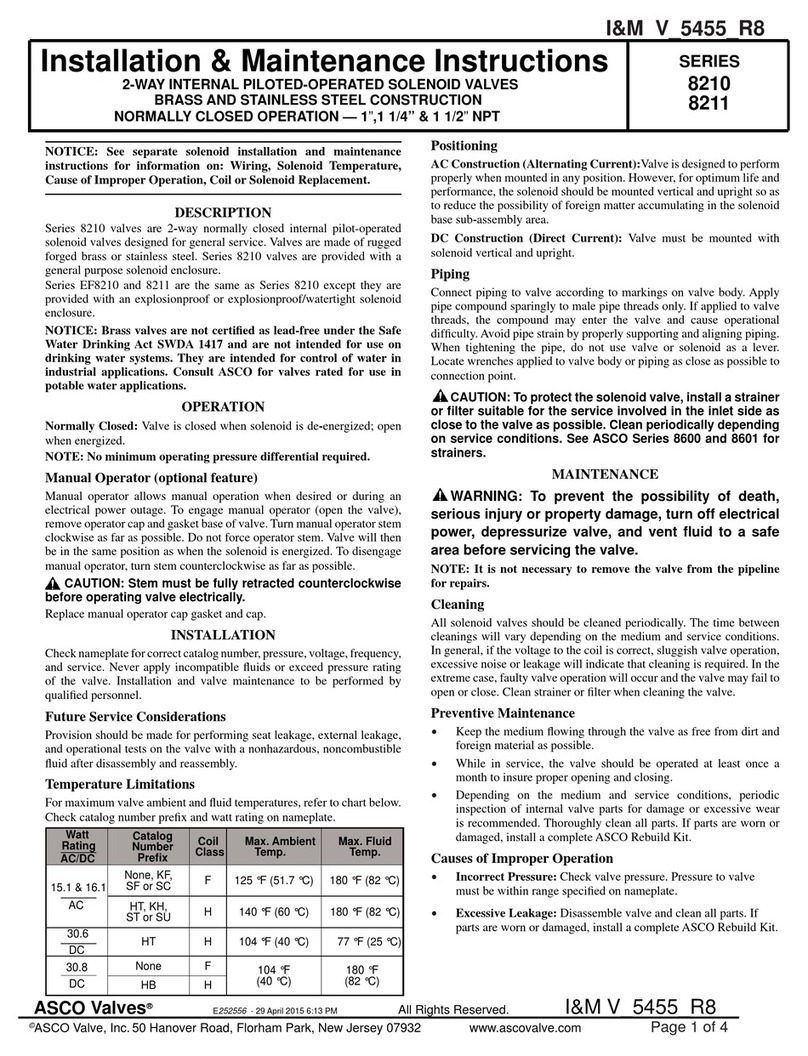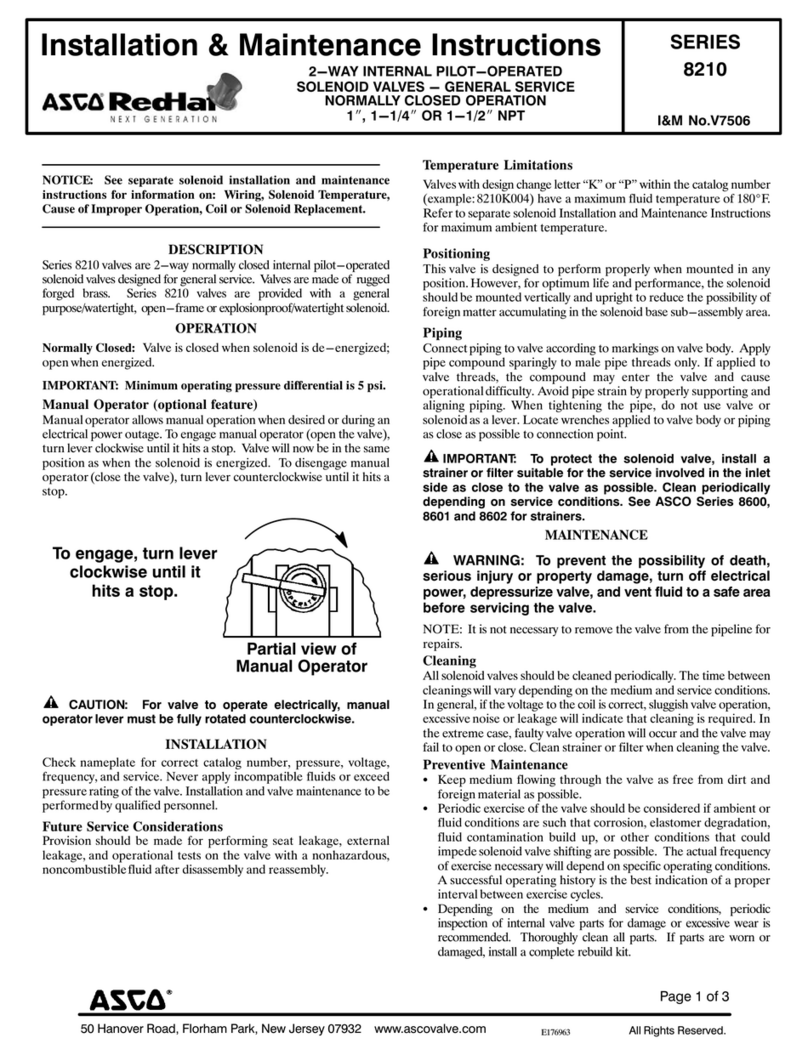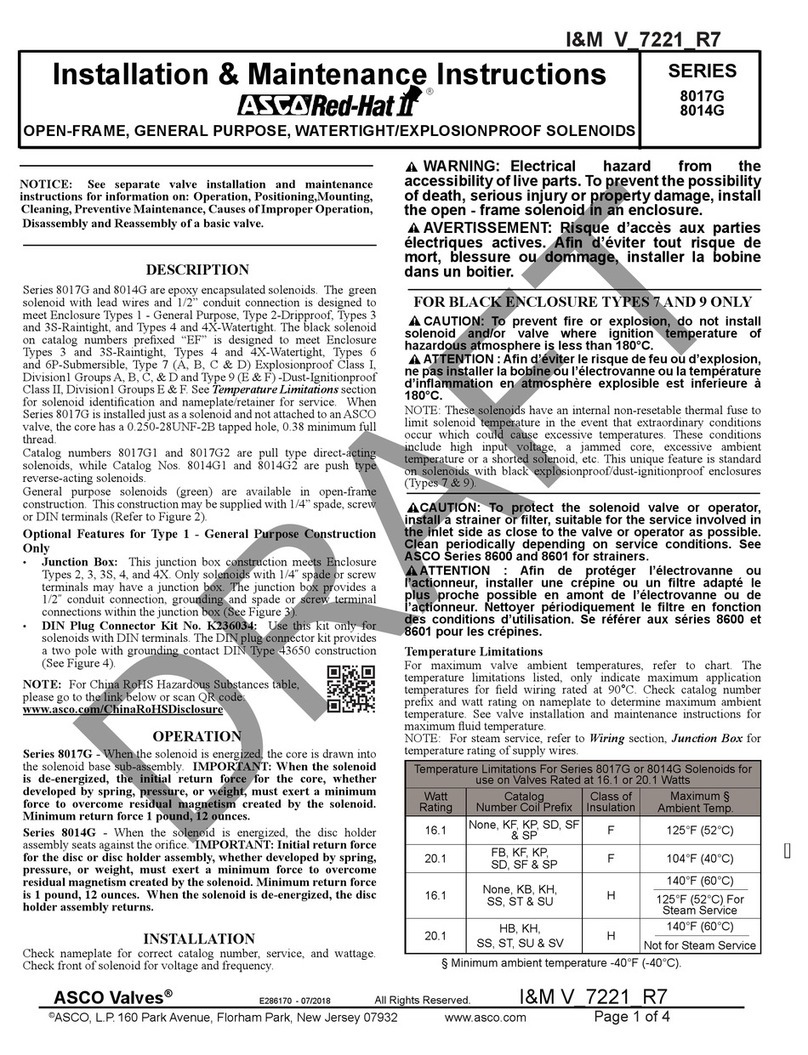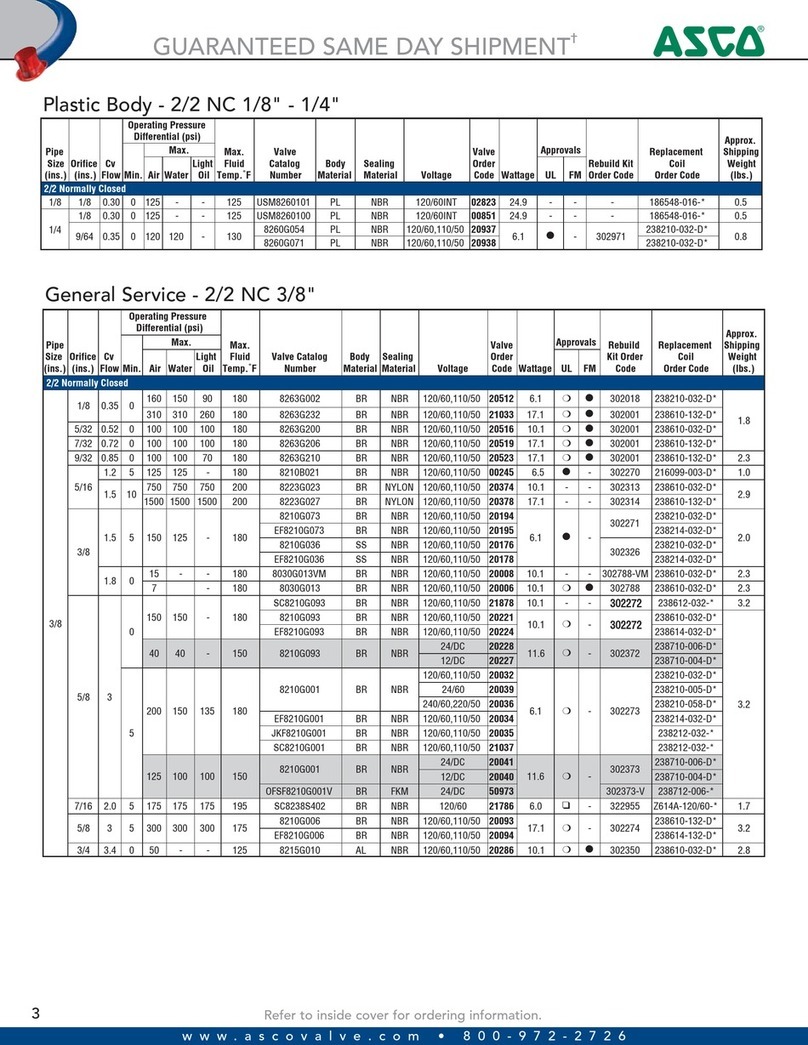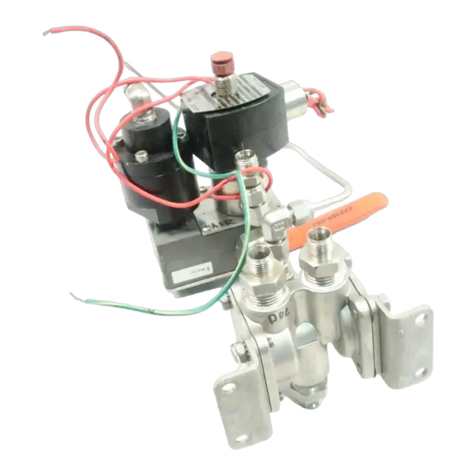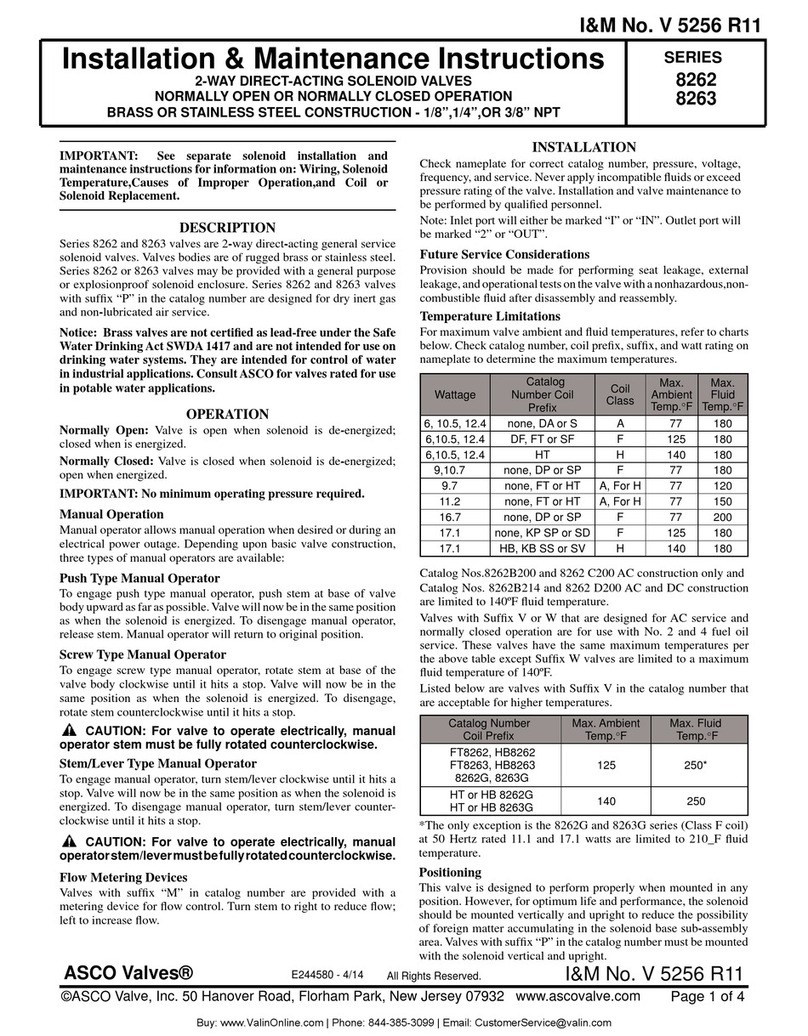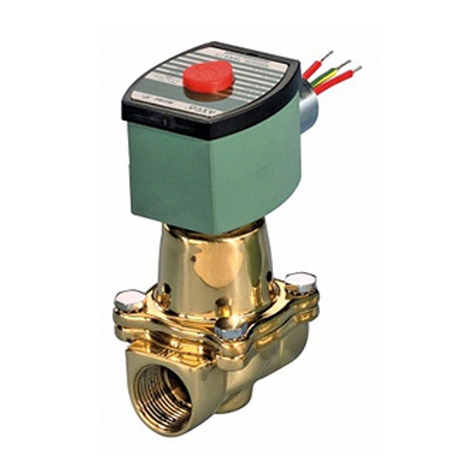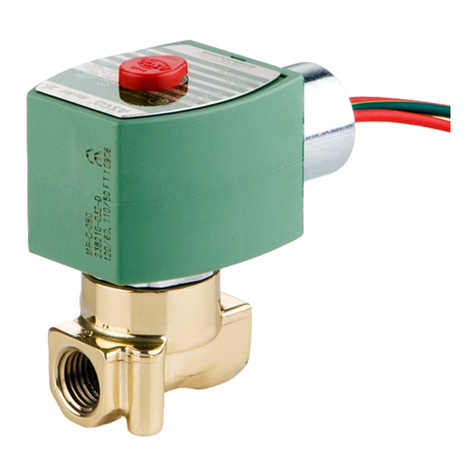
50 Hanover Road, Florham Park, New Jersey 07932 www ascovalve com
Page 2 of 3 I&M No V7569
M INTEN NCE
WARNING: To prevent the possibility of
death, serious injury or property damage, turn off
electrical power, depressurize valve, and vent
fluid to a safe area before servicing the valve.
Cleaning
All solenoid valves should be cleaned periodically. The time between
cleaning will vary depending on the medium and service conditions.
In general, if the voltage to the coil is correct, sluggish valve operation,
e cessive noise, or leakage will indicate that cleaning is required. In
the e treme case, faulty valve operation will occur and the valve may
fail to shift. Clean strainer or filter when cleaning the valve.
Preventive Maintenance
SKeep medium flowing through the valve as free from dirt and
foreign material as possible.
SPeriodic e ercise of the valve should be considered if ambient or
fluid conditions are such that corrosion, elastomer degradation,
fluid contamination build up, or other conditions that could
impede solenoid valve shifting are possible. The actual frequency
of e ercise necessary will depend on specific operating conditions.
A successful operating history is the best indication of a proper
interval between e ercise cycles.
SDepending on the medium and service conditions, periodic
inspection of internal valve parts for damage or e cessive wear is
recommended. Thoroughly clean all parts. If parts are worn or
damaged, install a complete rebuild kit.
Causes of Improper Operation
SIncorrect Pressure: Check valve pressure. Pressure to valve must
be within range specified on nameplate.
SExcessive Leakage: Disassemble valve and install a complete
ASCO Rebuild Kit.
Valve Disassembly (Refer to Figures 2 & 3)
1. Disassemble valve in an orderly fashion using e ploded view for
identification of parts.
2. Disconnect electrical hookup to solenoid and piping to valve
body.
3. Remove solenoid, see separate instructions.
4. Remove two he head mounting screws from offset holes in
valve body using a 5/16I or 8 mm wrench.
5. Unscrew solenoid base sub-assembly from valve body. Then
remove solenoid base gasket and core assembly with core
spring and core guide.
6. Unscrew end cap or optional manual operator and remove disc
holder spring, disc holder assembly and end cap gasket from
valve body.
7. All parts are now accessible for cleaning or replacement. If
parts are worn or damaged, install a complete ASCO Rebuild
Kit.
Valve Reassembly
1. Reassemble valve using e ploded views for identification and
placement of parts.
2. Lubricate all gaskets with DOW CORNINGr 200 Fluid
lubricant or an equivalent high-grade silicone fluid.
NOTE: Solenoid base gasket and end cap gasket are identical.
3. Reinstall end cap gasket, disc holder assembly, disc holder
spring and end cap or optional manual operator in valve body.
Torque end cap to 175 ± 25 in-lbs [19,8 ± 2,8 Nm].
4. Position solenoid base gasket in valve body.
5. Install core assembly with core spring and guide into solenoid
base sub-assembly and engage with valve body.
6. Torque solenoid base sub-assembly to 175 ± 25 in-lbs
[19,8 ± 2,8 Nm].
7. Reinstall valve on actuator, see Mounting Solenoid Valve To
NAMUR Actuator section.
8. Reinstall solenoid and make electrical connections, see
separate instructions.
9. Install piping to valve, see Piping section.
WARNING: To prevent the possibility of death,
serious injury or property damage, check valve for
proper operation before returning to service. Also
perform internal seat and external leakage tests
with a nonhazardous, noncombustible fluid.
10. Restore line pressure and electrical power supply to valve.
11. After maintenance is completed, operate the valve a few times
to be sure of proper operation. A metallic click indicates the
solenoid is operating.
ORDERING INFORM TION
FOR SCO REBUILD KITS
Parts marked with an asterisk (*) in the e ploded view are supplied in
Rebuild Kits. When Ordering Rebuild Kits for ASCO valves, order
the Rebuild Kit number stamped on the valve nameplate. If the
number of the kit is not visible, order by indicating the number of kits
required, and the Catalog Number and Serial Number of the valve(s)
for which they are intended.
